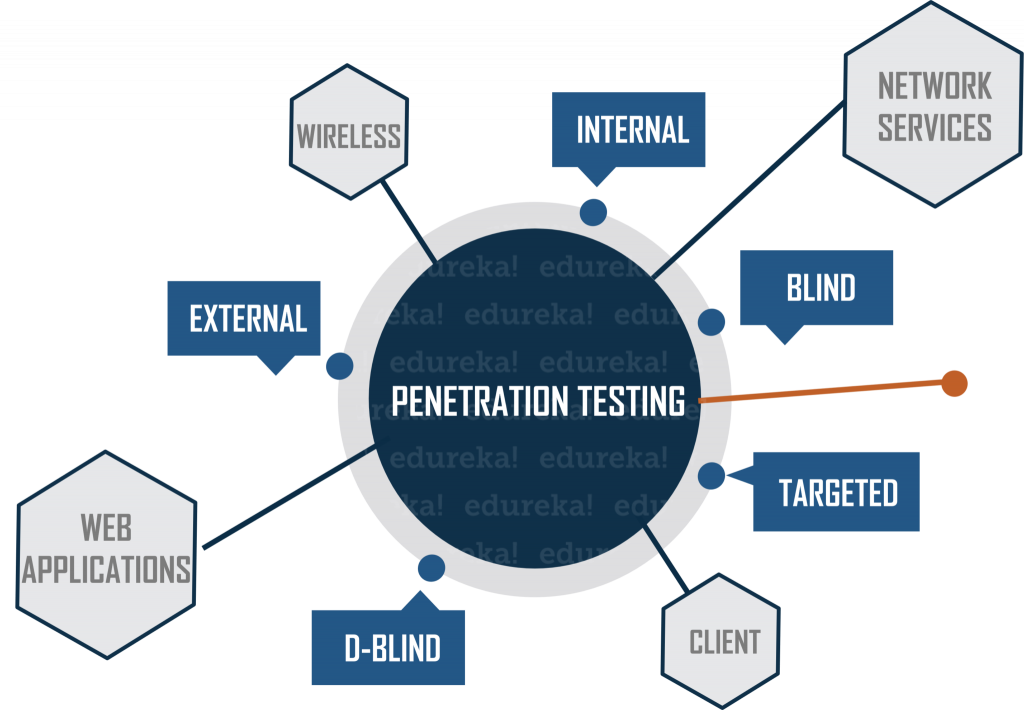Penetration testing, also known as “pentesting,” is a method of evaluating the security of a computer system, network, or web application by simulating an attack from a malicious outsider or insider. The goal of penetration testing is to identify vulnerabilities in a system before they can be exploited by attackers. By identifying and addressing these vulnerabilities, organizations can improve their overall security posture and reduce the risk of a successful cyber attack.
There are several types of penetration testing, each with its own unique focus and objectives. The most common types of penetration testing include:
- External testing: This type of testing simulates an attack from an external attacker who has no prior knowledge of the target system. The goal of external testing is to identify vulnerabilities that can be exploited by attackers who are attempting to gain unauthorized access to the system from outside the organization.
- Internal testing: Internal testing simulates an attack from an insider, such as a disgruntled employee or a contractor with access to the target system. The goal of internal testing is to identify vulnerabilities that can be exploited by insiders who have legitimate access to the system.
- Web application testing: This type of testing focuses on identifying vulnerabilities in web applications, such as SQL injection and cross-site scripting (XSS) attacks. The goal of web application testing is to identify vulnerabilities that can be exploited by attackers who are attempting to gain unauthorized access to sensitive information or disrupt the availability of the application.
- Wireless network testing: This type of testing focuses on identifying vulnerabilities in wireless networks, such as weak encryption or misconfigured access points. The goal of wireless network testing is to identify vulnerabilities that can be exploited by attackers who are attempting to gain unauthorized access to the network or intercept sensitive information.
There are also different models of penetration testing, each with its own strengths and weaknesses. The most common models include:
- Black box testing: This type of testing simulates an attack from an attacker who has no prior knowledge of the target system. The tester is only given basic information about the system, such as the IP address or domain name. Black box testing is useful for identifying vulnerabilities that can be exploited by attackers who are attempting to gain unauthorized access to the system from outside the organization.
- White box testing: White box testing simulates an attack from an attacker who has detailed knowledge of the target system. The tester is given detailed information about the system, such as network diagrams, source code, and user accounts. White box testing is useful for identifying vulnerabilities that can be exploited by insiders who have legitimate access to the system.
- Gray box testing: Gray box testing simulates an attack from an attacker who has some knowledge of the target system. The tester is given some information about the system, such as IP ranges or domain names. Gray box testing is useful for identifying vulnerabilities that can be exploited by attackers who have some knowledge of the system, such as a former employee.
Penetration testing can be applied in a variety of situations, including:
- Compliance: Many organizations are required to comply with regulations such as PCI DSS, HIPAA, and NIST 800-53, which mandate regular penetration testing.
- Mergers and acquisitions: Organizations that are involved in mergers or acquisitions often conduct penetration testing to identify vulnerabilities in the systems of the target company.
- Incident response: Organizations that have experienced a security incident often conduct penetration testing to identify vulnerabilities that may have contributed to the incident.
- Cloud security: Organizations that use cloud services often conduct penetration testing to identify vulnerabilities in the cloud infrastructure or applications.
- IoT security: Organizations that use IoT devices often conduct penetration testing to identify vulnerabilities in the devices or the network that connects them.

